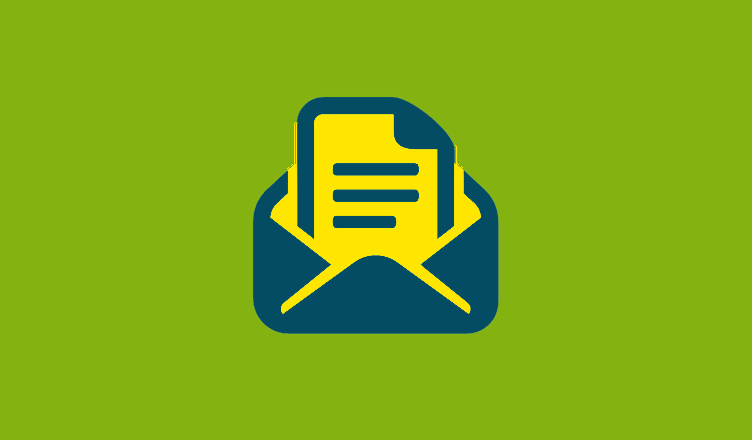When payments are overdue, it can be stressful for both the creditor and the debtor. However, writing an effective collect payment email can often feel like an uphill battle, especially when response rates are lower than expected. You may struggle to find the right tone, wording, or approach that encourages prompt action from your recipients. Fortunately, there are strategies you can implement to increase response rates and ensure your communication is both professional and effective.
In this blog, we’ll share how to write a collect payment email that connects with clients, key tips for persuasive messages, and mistakes to avoid for faster payments.
Understanding the Importance of a Well-Written Collect Payment Email
A well-written collect payment email is more than just a reminder; it’s an essential tool for managing receivables. Effective emails help maintain professional relationships, encourage prompt action, and reduce the chances of disputes. The key to a successful email is making the recipient feel understood and respected, while clearly communicating the importance of settling the payment.
- Maintaining Professionalism: Regardless of the payment’s overdue status, always keep a polite and professional tone.
- Clarity and Precision: Be clear about the amount due, the due date, and any next steps.
- Building Trust: A well-written email can reassure your client that you are fair and transparent, fostering trust for future transactions.
These components, when combined, help create an email that’s more likely to elicit a positive response from your clients, ensuring your business remains financially stable.
Key Elements of an Effective Collect Payment Email
When drafting a collect payment email, there are several critical elements to include in order to make the message effective. Here are the essential components that should always be part of your payment reminder emails:
- Subject Line: The subject line is the first thing your recipient sees. It needs to be clear and urgent without being too harsh. For example, “Friendly Reminder: Payment Due on [Invoice #]” or “Action Required: Payment for [Service/Product] Due.”
- Greeting: Start with a friendly and polite greeting, addressing the recipient by name if possible. A personal touch goes a long way.
- Context and Details: Briefly explain what the payment is for, including the date of the original invoice or service rendered, the total amount due, and any previous communications.
- Call to Action: Encourage the recipient to take action. Be clear about how they can pay and provide a direct link to the payment page, if applicable.
- Professional Closing: End with a polite closing statement, offering assistance if needed, and providing contact details for any inquiries.
Each part of the email works together to guide the recipient toward making a payment without feeling pressured.
Choosing the Right Tone for Your Collect Payment Email
The tone of your email plays a huge role in how it’s received. You don’t want to come across as too harsh, but you also need to convey the seriousness of the situation. Striking the right balance is key.
- Friendly Yet Firm: Start with empathy by acknowledging the situation and offering understanding. For example, “I hope everything is going well. We wanted to reach out regarding your overdue payment.”
- Polite and Direct: Make sure your request is clear and professional. The more direct you are, the more likely you are to get a response.
- Avoid Being Too Pushy: While it’s essential to be firm, being too aggressive may discourage the recipient from paying, especially if they’re experiencing financial hardship.
A good tone not only increases the likelihood of a response but also helps preserve a good relationship for future business transactions.
Common Mistakes to Avoid in Collect Payment Emails
When drafting a collect payment email, there are a few common mistakes to steer clear of to improve your chances of getting a positive response. Here are some pitfalls you should avoid:
- Being Too Vague: Avoid using unclear language or leaving out essential details, such as the payment due date or the amount owed. A vague email can confuse the recipient and delay payment.
- Aggressive Language: Using overly aggressive language, such as “pay now” or “we will take legal action,” may alienate your recipient and make them less inclined to pay.
- Too Much Fluff: Avoid unnecessary filler content that doesn’t contribute to the goal of the email. The message should be straightforward and concise.
- Not Offering Assistance: If the recipient is facing difficulties, offering a payment plan or alternative solutions may encourage them to settle the debt sooner.
By avoiding these mistakes, your collect payment email will come across as professional, empathetic, and clear.
Structuring a Collect Payment Email for Maximum Impact
To ensure your collect payment email achieves the desired result, you need to structure it properly. Here’s a simple, effective format you can follow:
- Subject Line: Clear and to the point.
- Greeting: Personalize it with the recipient’s name.
- Introduction: Acknowledge the situation and offer understanding.
- Details: Please specify the payment amount and its purpose.
- Call to Action: Provide a direct link for easy payment.
- Polite Reminder: Mention any late fees or interest that may apply (if relevant).
- Contact Information: Offer help in case of any questions or issues.
- Closing: A friendly but firm closing statement.
This simple format helps ensure all critical points are covered, and the email remains professional and easy to read.
Offering Payment Solutions to Improve Response Rates
In some cases, offering flexible payment solutions can significantly improve your response rates. For example:
- Payment Plans: If the recipient is unable to pay the full amount, offering a structured payment plan might make them more inclined to respond positively.
- Discount for Early Payment: Some companies offer a small discount if the payment is made before a certain date, which can encourage faster payment.
- Alternative Payment Methods: Make it easy for the recipient by offering multiple payment methods, such as online payments, checks, or bank transfers.
By providing options, you demonstrate your willingness to work with your clients, which can increase the likelihood of getting paid.
Using Templates to Save Time on Payment Collection
One way to streamline your collect payment email process is by using email templates. With a well-structured template, you can save time while ensuring that all the necessary information is included in each email. Below is a sample email template you can modify for different clients:
Subject: Payment Reminder for Invoice #[Invoice Number]
Dear [Client Name],
I hope you are doing well. I’m writing to kindly remind you that payment for invoice #[Invoice Number] in the amount of [Amount Due] was due on [Due Date]. As of today, the payment remains outstanding.
If you have already made the payment, please disregard this message. Otherwise, please process the payment at your earliest convenience. You can easily make your payment by following this [payment link].
If you are facing any issues or would like to discuss alternative payment arrangements, please don’t hesitate to reach out.
Thank you for your attention to this matter. We appreciate your prompt response.
Best regards,
[Your Name]
[Your Company Name]
[Contact Information]
This template is clear, concise, and professional, helping you convey your message effectively without overwhelming the recipient.
Conclusion
Writing a collect payment email doesn’t have to be a daunting task. By following the strategies outlined above, you can craft emails that enhance response rates and foster positive relationships with clients. Keep your tone polite yet firm, structure your email clearly, and offer payment solutions when necessary to increase your chances of receiving prompt payments. By implementing these tips, you can ensure that your payments are collected more efficiently.




